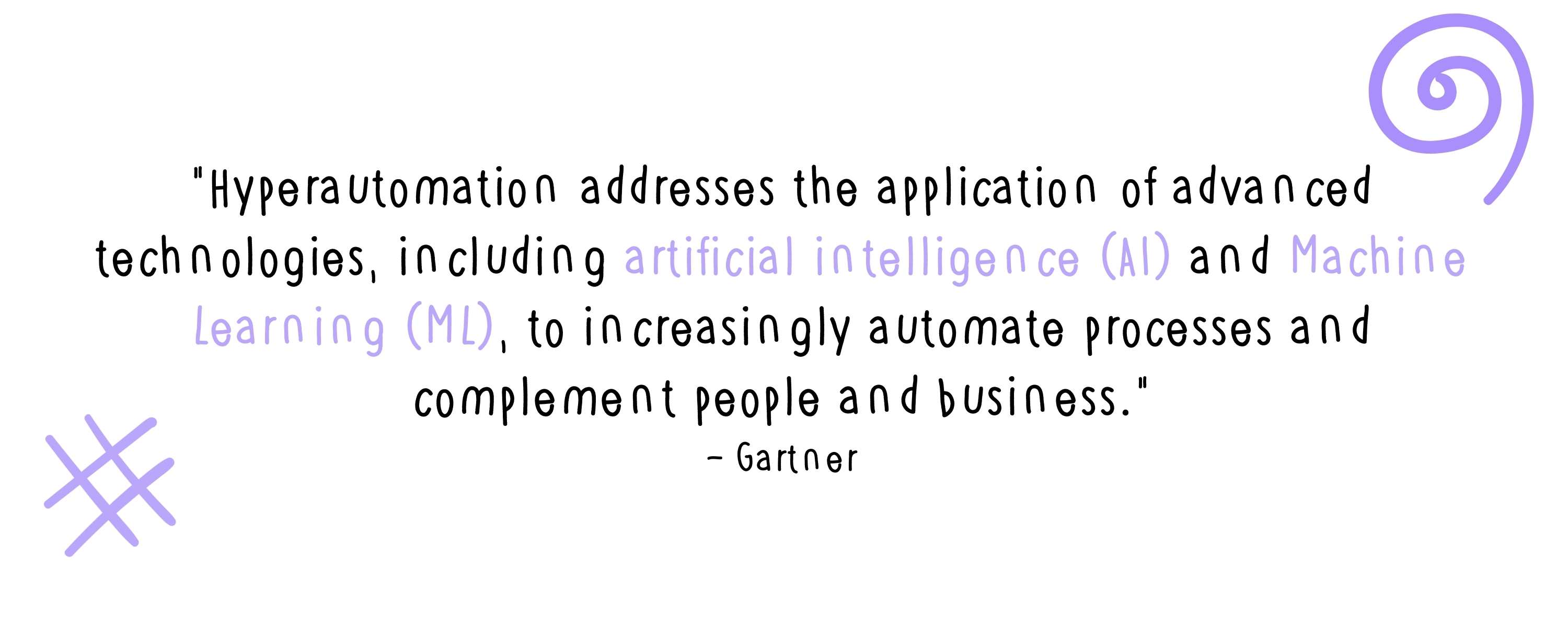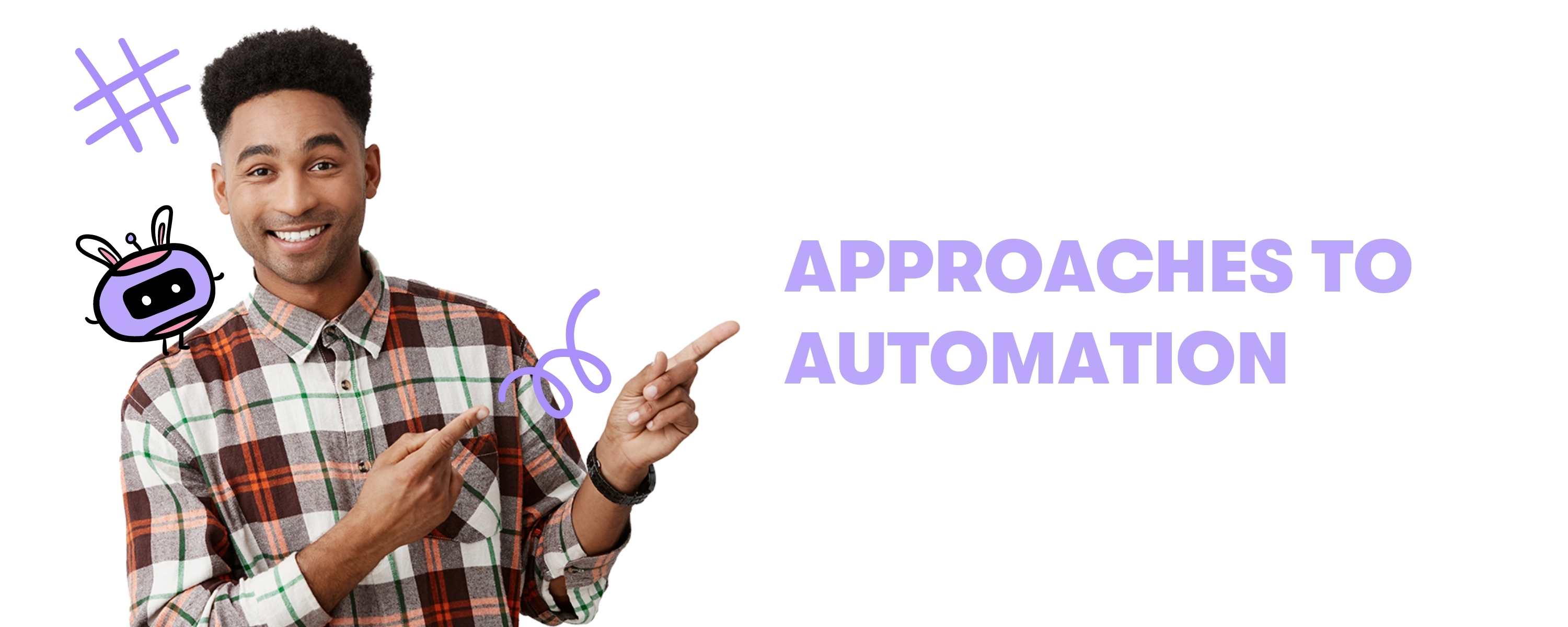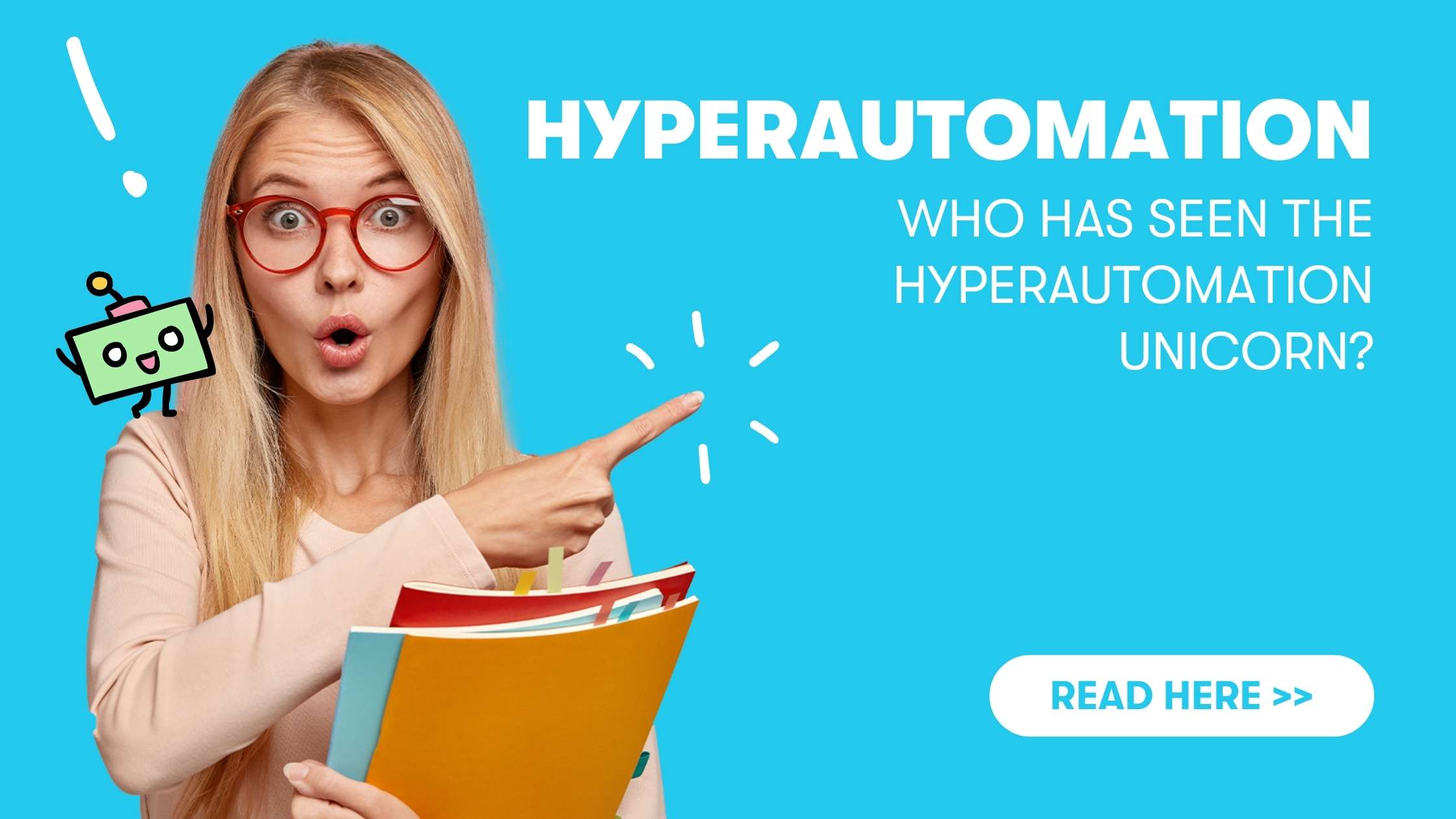In a world where digital technologies are the drivers of commercially successful commerce and digital-first approaches dominate the agenda of forward-thinking leaders, the call for digital operational excellence is growing louder. This is because more and more tasks and processes must be automated, and automation must also be successfully orchestrated across a wide range of functional areas. Hyperautomation is seen by many companies, professionals and experts as both the key to digital operational excellence and a sure ticket to the digital future. Everyone is talking about the magic unicorn, but where does hyperautomation actually come from and what is behind it?
Hyperautomation: An Excellent Future
In October 2019, the term Hyperautomation first appeared on Gartner's list of the top 10 strategic technology trends for 2020.
According to Gartner Hyperautomation "addresses the application of advanced technologies, including artificial intelligence (AI) and machine learning (ML), to increasingly automate processes and complement people and business."
The global market for technologies that enable hyperautomation will reach $596.6 billion in 2022, according to a new forecast from Gartner. This is up from $481.6 billion in 2020 and $532.4 billion in 2021 in the automation technology business.
Hyperautomation spans a range of tools that can be automated, but also refers to the finer points of automation (i.e., discover, analyze, design, automate, measure, monitor, re-evaluate). Forrester also knows the concept of hyperautomation as "digital process automation" and IDC runs it under the name "intelligent process automation.
Early on, hyperautomation was predicted to have an excellent future. In the 2020 Coherent Market Insights, the hyperautomation market is forecast to grow at a compound annual growth rate of 19% between 2019 and 2027, exceeding $23.7 billion by the end of the forecast period.
Hyperautomation is More Than Just a Technology
Let's be clear right from the start: The ultimate tool for hyperautomation does not exist. Hyperautomation is more of a strategic business initiative than an all-encompassing technology. Hyperautomation can be more accurately described as continuous automation that leverages various AI technologies in combination with Robotic Process Automation (RPA) to deliver superior business results and continuous digital transformation at the same time. Moving from automating simple, well-defined tasks to more complex, exception-driven processes requires combining and integrating complementary technologies such as process mining, business analytics, ingestion engines (OCR, computer vision), and machine learning with the RPA toolbox to create a comprehensive approach to increasing and transforming the efficiency as well as effectiveness of automation. In this way, companies overcome the limitations of approaches based on a single automation tool.

The Ingredients
Anyone considering hyperautomation as a "digital strategy" for their company should understand how digital technologies fit into existing workflows and what role they can play in new processes. Robotic Process Automation (RPA) plays a special role as a basic technology in very many approaches.

Robotic Process Automation (RPA)
RPA is the automation of business processes by "digital software robots", so-called RPA bots. The bots perform repetitive tasks and business tasks such as querying, calculations, creating and updating records, filling out forms, creating reports, cutting and pasting, and other high-volume, transactional tasks that require moving data within and between applications. In other words, RPA makes sense wherever interfaces do not exist or codes need to be generated individually. An RPA Business Analyst or Automation Agent is recommended for effective implementation through proper process analysis and assessment of Robotic Process Automation.
Intelligent Business Process Management Systems
Another tool from the hyperautomation toolbox is Intelligent Business Process Management Systems (iBPMS). With iBPMS, a business process management tool (BPM tool) is enhanced with AI techniques as well as features such as cloud computing, data mining, real-time analytics, real-time decision management, logic building blocks, and system networking to optimize operational responsiveness and efficiency in the enterprise. But iBPMS tools not only optimize business processes, they also simplify the management of those very processes when it comes to end-to-end process automation. The low-code interface of most intelligent business process management tools also simplifies collaboration between IT and business.
Integration Platform as a Service (iPaaS)
Among the tools that are repeatedly used in hyperautomation projects is Integration Platform as a Service (iPaaS). The intelligent platform for automating business processes is an excellent digital tool for various integration scenarios such as data integration, system integration, hybrid integration and for managing the integration flow within the cloud and between the cloud and business.
Low Code Application Platform
When it comes to automation and process efficiency, low-code application platforms (LCAPs) have become an indispensable part of the equation. They accelerate the speed at which apps and services can be developed and processes automated, as user-friendly building blocks instead of complicated programming languages facilitate software development. Gartner sees low code development platforms, even if they only make up a small part of the market, as a driver of hyperautomation and forecasts growth of 54 percent for this technology by 2024.
Artificial intelligence
Artificial intelligence (AI) and machine learning (ML), along with artificial neural networks, deep learning, natural language processing (NLP), machine vision, and optical character recognition (OCR), are the fundamental catalysts for advanced process automation and automated decision making. AI and machine learning are technologies that learn from behaviors and events, enabling them to perform specific tasks without explicit programming using data. In the context of hyperautomation, AI and machine learning can compensate for decreasing automation speed due to increasing process complexity by recognizing patterns in data more efficiently and quickly than humans, thereby allowing companies to mine deeper into their data in real time.
For the field of decision making, Decision Automation has emerged as a forward-looking strategy to automate decision processes using AI, Data, Logics and Business Rules. They make it possible to navigate through appropriate decision processes to make a clear and precise decision without human intervention.

Different Approaches To Automation
As numerous as the combinable possibilities are, as different are the approaches of the automation suppliers with which they approach the topic of hyperautomation:
For example, UiPath, a leading RPA provider, approaches the topic of hyperautomation from the automation side. UiPath's vision is to leverage the transformative power of automation to harness the potential of employees for value-added activities. To that end, UiPath has developed an end-to-end hyper-automation platform, combining its RPA solution with a comprehensive set of AI capabilities. "The integrated capabilities cover every stage of the automation lifecycle and provide deployment options that allow companies and organizations to deploy the software robots they develop both on-premise and via the UiPath Automation Cloud."
Unlike UiPath, Celonis, a leader in process mining, approaches hyperautomation from the analytics side. For Celonis, automation is not the only solution for optimizing functions and business processes in the enterprise. Celonis has identified the root cause problem for achieving better business results in the processes themselves. To achieve the desired results, the first step is to analyze and improve the underlying processes. And for Celonis, there is no single technology for process optimization. Rather, it requires a holistic strategy for process improvement.
Integrated Automation Services
A whole range of software providers also offer their solutions with integrated automation functions:
For example, SAP AG's automation solution combines RPA with ML and AI and relies on native API's and connectors to SAP S4/Hana and SAP GUI to achieve bot performance improvement with low support overhead. With SAP Intelligent Robotic Process Automation, companies can automate processes across SAP applications as well as non-SAP applications.
Workday, a provider of cloud software for human capital and financial management, relies on predictive analytics and ML algorithms within its HCM and financial applications to anticipate emerging issues.
Salesforce, the world's leading CRM platform, provides its users with various tools for automating administrative tasks, such as Workflows, Process Builder, Approval Process and Flow Builder. The type of business process determines the automation method.
But new players for smaller companies, such as HR software provider Personio, also offer software that allows time-consuming workflows to be digitized and in which functions for structuring and optimizing processes are already integrated, such as the CV parsing function, which automatically reads the most important applicant data from resumes and directly creates the applicant profile.
Another example is Pipedrive, which can be used to automate digital sales processes. Set triggers and actions trigger the start of the automated process. These services help not only on the hyperautomation journey, but first and foremost in the "digital transformation" of the company.
User-Friendly Automation Tools
Another approach to approaching automation is usability. Zapier must certainly be mentioned here. This is a user-friendly web service with which users can quickly and easily connect or automate actions between around 3,000 apps and online services. However, only a maximum of 2 apps can be connected with each other, and only 5 process steps are possible in the free version.
IpaaS platforms such as the Czech Integromat offer fewer connectors but more trigger options. In addition, Integromat scores over Zapier with a visual representation instead of just a linear one. Modules can be easily exchanged with Integromat using drag & drop, which requires more effort with Zapier's linear process representation. This is also one of the absolute pro arguments for the digital cloud automation service from the Czech Republic, as it means that the business directly affected can also participate in the automation. Overall, however, both services effectively lead to the goal.
Simple Automation Solutions
Cognitive data capture platforms, such as Rossum, rely on AI intelligence like OCR to automate business communications by reading business documents, extracting the information, and thus organizing and automating the processing of incoming document traffic. Natif also uses such innovative document analysis to read and evaluate documents faster than humans.
Going a step further, Abbyy is using AI aspects such as computer vision, OCR, NLP, as well as ML and Deep Learning for intelligent document capture and processing. The use of these cognitive capabilities also ultimately leads to existing RPA platforms becoming smarter.
Intelligent Automation Tools
Vendors such as Signavio, Camunda, and Bizagi are more likely to be among the proponents of intelligent automation. They rely on iBPM and thus also on the integration of modern applications such as RPA and ML into everyday business processes to create automated, meaningful data analyses and to better automate and optimize efficiency. The power of iBPM lies in its connectivity with cutting-edge technology to optimize workflows. However, despite efforts by some vendors to make their solutions more user-friendly, users of more complex tools do not come without coding skills.
Automation Drivers
Low code and no code automation platforms such as Bryter, Power Apps or Appsheet are the fuel that drives automation by providing people with a clever interface for handling or automating even complex processes. The limited skills and resources of IT departments and the search by business departments for ways to implement their own automation projects in a timely manner are increasing the demand for automation tools that can be used by employees without programming skills. The opportunities arising from this approach to simplified process automation will give further fuel to the idea of hyperautomation.
With An Eye For The Big Picture
As providers of processor orchestration platforms, companies like Tonkean virtually float above things. Their domain is the layer above the automation solution. They connect and orchestrate all the business processes, meaning they make sure they are executed, monitored and managed at the right time, but they don't automate any of them themselves. Native connectors and functions such as OCR and NLP not only allow business processes to be handled independently, but also allow processes to be handled in conjunction with other automation platforms.
The Sum Results In Hyperautomation
As it turns out, the magic unicorn called hyperautomation does not yet exist per se. But all the ingredients are there and only need to be properly combined to realize true hyperautomation. By combining different automation aspects and approaches, companies can go beyond the limits of individual business processes and automate almost any tedious and scalable task. This requires careful planning and integration of technologies that meet the needs of the business. The success of hyperautomation ultimately depends on all of the above aspects working together seamlessly.









